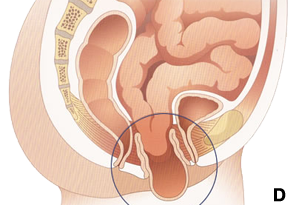Posterior Prolapsed Symptoms, Causes, Diagnosis and Treatment

What Is Posterior Prolapsed?
Fascia is a fine wall of fibrous tissue, it acts to separate a female’s rectum from her vagina. When this weakens, vaginal wall tends to bulge, leading to posterior prolapsed. Certain processes for example childbirth exert pressure on fascia. This can result in posterior prolapsed.
In addition to this, small prolapsed can rarely source any indication, though large prolapsed can root a prominent bulging of tissue in the opening of vagina. Even though, the condition can be uncomfortable, yet it hardly causes pain. In case of need, you can try self- care measures, or go for some other nonsurgical treatments that have proved to be effective for many patients. However for intense conditions, patients are advice surgical options for the repair.
What Are The Symptoms Of Posterior Prolapsed?
As mentioned earlier, small posterior prolapsed hardly sources indications. However in other cases, one may observe the following signs and symptoms:
- Bulging of tissue in the vagina.
- This can or cannot obtrude through the opening of your vagina.
- Sensation of fullness or rectal pressure.
- Problem with bowel movements.
- Feeling the urge to pass stool even after the bowel movements.
- Problems related to sex.
- A number of females with the concern also faces prolapsed of some other pelvic organs for example small intestine, uterus or bladder.
What Causes Posterior Prolapsed?
Posterior prolapsed can result from a number of reasons, these may include:
- Upright posture.
- Increased pelvic floor pressure.
- Pregnancy.
- Childbirth.
What Are The Risk Factors Of Posterior Prolapsed?
Several factors are known to increase the risk of posterior prolapsed, these are as follow:
- Genetics: a number of females have weak connective tissues in their pelvic area by birth, that increases the risk of posterior prolapsed in the future. Rests have stronger connective tissues.
- Childbirth: women those have delivered their children vaginally are more prone to the condition than others.
- Perineal tears: A history of perineal tears also puts you at an increased risk of posterior prolapsed.
- Incisions: women with episiotomies during the childbirth are also an increased risk.
- Obese: It is observed that obese women have greater the tendencies of experiencing posterior prolapsed as compared to women with normal weight.
- Aging: as with normal aging, the chances of posterior prolapsed raises. Reason being, as you age, your nerve function, elasticity and muscle mass loses. This makes the muscles to stretch, leading to weaker muscles.
How Is Posterior Prolapsed Diagnosed?
Usually, the health care provider detects the condition during the pelvic exam of the rectum and vagina. However, he or she may recommend the following tests:
- Pelvic exam.
- Imaging tests.
In some cases, doctors ask the patients to fill a questionnaire tends to help the doctor judge the intensity of your case.
How Is Posterior Prolapsed Treated?
Its treatment relies upon the intensity of the condition; however, possible options are as follow:
- Observation.
- Pessary.
- Surgery.
By : Natural Health News




